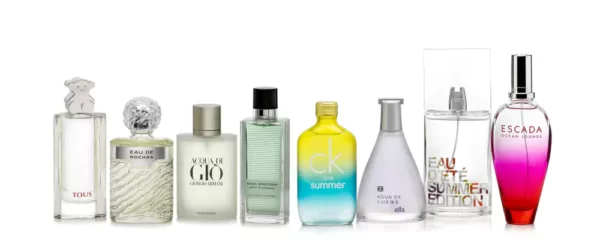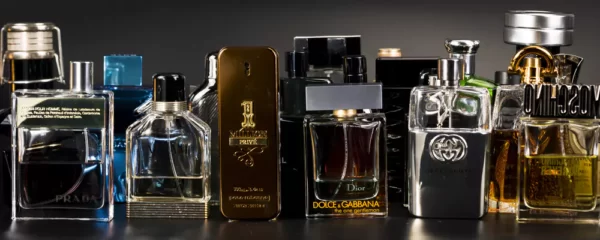Branding of Perfume: How to Create a Scent-sational Product?
Perfume is more than just a product. It is an experience, a mood, and a statement. It is a way of expressing yourself, your personality, and your style. Perfume is also a competitive and lucrative business that requires careful planning and strategy. This blog will examine the idea of perfume branding, how to develop your brand identity, and how to market your perfume effectively.
The Concept of Perfume Branding
Perfume branding creates a distinctive and memorable identity for your perfume product, which sets it apart from other products. It involves not only your perfume’s name, logo, and packaging but also the story, message, and values behind it. Perfume branding aims to create an emotional connection between products and the audience.
Perfume branding is essential because it helps you to:
- Stand out from the competition
- Attract and retain customers
- Build trust and credibility
- Increase awareness and recognition
- Enhance customer satisfaction and loyalty
- Generate more sales and revenue
Define Your Perfume Brand
Before creating your perfume brand identity, you need to define your brand. You must understand your market, competitors, and value proposition.
Market Research
Market research is gathering and analyzing market information, such as size, trends, threats, and challenges. Market research helps you to:
- Identify your target audience: Who are they? What are their needs? What are their preferences? What are their motivations?
- Identify your competitors: Who are they? What are their strengths? What are their weaknesses? What are their strategies?
- Identify your niche: What is your unique selling point? What makes you different from others? What value do you offer?
Value Proposition
The value proposition is the statement that summarizes why your customers should buy your perfume. It answers the question: What problem do you solve for your customers? How do you solve it better than others?
Value proposition helps you to:
- Communicate your benefits: What are the benefits of using your perfume? How do they improve your customers’ lives?
- Communicate your differentiation: What are the features of your perfume? How do they make you stand out from others?
- Communicate your proof: What is the evidence that supports your claims? How do you demonstrate your credibility?

Brand Personality and Voice
Brand personality is the set of human traits attributed to your perfume brand. Brand personality helps you to:
- Create an emotional bond with your customers: How do you want them to feel when they use your perfume? What emotions do you want to evoke in them?
- Create a memorable impression on your customers: How do you want them to remember you? What associations do you want them to have with you?
- Create a consistent tone across all your touchpoints: How do you want to communicate with your customers? What words do you want to use? What style do you want to adopt?
Some of the dimensions of brand personality are:
- Memorability: How easy is it to recall your perfume brand name and logo? How distinctive and catchy are they?
- Trustability: How reliable is your perfume brand? How honest and transparent are you?
- Value: How much value do you offer for the price of your perfume? How affordable and accessible are you?
- Authenticity: How genuine and original is your perfume brand? How true are you to your vision and mission?
- Authority: How knowledgeable and experienced is your perfume brand? How credible and reputable are you?
Develop Your Perfume Brand Identity
You must develop your brand identity once you have defined your perfume brand. It means you must create the visual elements representing your perfume brands., This includes your logo, typography, color palette, imagery, and packaging.
Visual Branding
Visual branding creates your perfume brand’s identity, conveying your brand personality and value proposition.
Visual branding helps you to:
- Attract attention and interest: How do you catch the eye of your potential customers? How do you make them curious and intrigued?
- Create recognition and recall: How do you make your perfume brand easily identifiable and memorable? How do you make them remember you?
- Create consistency and coherence: How do you make your perfume brand look unified and harmonious across all your touchpoints? How do you make them look professional and polished?
Some of the elements of visual branding are:
- Logo design: Logo design is creating the symbol or emblem representing your perfume brand. Logo design helps you to:
- Express your brand name and message: What is the name of your perfume brand? What is the slogan or tagline of your perfume brand?
- Express your brand personality and style: What is the mood and tone of your perfume brand? What is the shape and style of your logo?
- Express your brand differentiation and value: What is your perfume brand’s unique feature or benefit? What is the color and font of your logo?
- Typography: Typography is selecting and arranging the fonts used for your perfume brand. Typography helps you to:
- Express your brand personality and voice: What is the character and attitude of your perfume brand? What is the size and weight of your fonts?
- Express your brand readability and legibility: How easy is reading and understanding your perfume brand? What is the contrast and spacing of your fonts?
- Express your brand hierarchy and emphasis: How do you organize and prioritize the information about your perfume brand? What is the alignment and decoration of your fonts?
- Color palette: The color palette chooses the colors used for your perfume brand. A color palette helps you:
- Express your brand personality and emotion: What is the feeling and mood of your perfume brand? What are the primary, secondary, and accent colors of your palette?
- Express your brand differentiation and association: What are the meanings and associations of your colors? What are the complementary, analogous, or triadic colors of your palette?
- Express your brand harmony and balance: How do you combine and contrast your colors? What are the saturation, brightness, and temperature of your colors?
- Imagery: Imagery is selecting and using the images used for your perfume brand. Imagery helps you to:
- Express your brand story and message: What is the story behind your perfume brand? What is the message that you want to convey with your images?
- Express your brand personality and style: What is the look and feel of your perfume brand? What are the types and sources of your images?
- Express your brand quality and consistency: How do you edit and optimize your images? What are the resolution, format, and size of your images?

Perfume Packaging Branding
Perfume packaging branding creates the physical appearance of your perfume product, enhancing its value and appeal.
Perfume packaging branding helps you to:
- Protect and preserve your perfume: How do you ensure the safety and quality of your perfume? What are the materials and features of your packaging?
- Display and showcase your perfume: How do you present and highlight your perfume? What is the shape and design of your packaging?
- Communicate and persuade your perfume: How do you inform and convince your customers to buy your perfume? What are the text and graphics of your packaging?
Some of the elements of perfume packaging branding are:
- Perfume bottle design: It creates the container that holds your perfume. Perfume bottle design helps you to:
- Express your brand differentiation and value: What is your perfume brand’s unique feature or benefit? What is the color and material of your bottle?
- Express your brand functionality and usability: How easy is using and storing your perfume? What is the cap and nozzle of your bottle?
- Label design: Label design creates the sticker or tag attached to your perfume bottle. Label design helps you to:
- Express your brand name and message: What is the name of your perfume brand? What is the slogan or tagline of your perfume brand?
- Express your brand personality and voice: What is the character and attitude of your perfume brand? What is the font and color of your label?
- Express your brand information and regulation: What are the ingredients, directions, and warnings? Of your perfume? What are the logos, symbols, and codes of your label?
- Box design: The method of creating the outer packaging encloses your perfume bottle. Box design helps you to:
- Express your brand personality and style: What is the mood and tone of your perfume brand? What is the shape and design of your box?
- Express your brand differentiation and value: What is your perfume brand’s unique feature or benefit? What is the color and material of your box?
- Express your brand protection and preservation: How do you ensure the safety and quality of your perfume? What are the cushioning and sealing of your box?
Effective Perfume Marketing Strategy
After creating your perfume brand identity, you need to market your perfume product in a way that reaches and engages your target audience. Perfume marketing strategy is the process of planning and executing the actions that promote and sell your perfume.
Perfume marketing strategy helps you to:
- Increase awareness and recognition: How do you make your perfume known and visible to your potential customers? What are the channels and platforms that you use?
- Increase interest and desire: How do you make your perfume appealing and attractive to potential customers? What are the messages and offers that you use?
- Increase action and loyalty: How do you make your perfume purchased and repurchased by your customers? What are the incentives and rewards that you use?
Some of the tips for effective perfume marketing strategy are:
- Be original, albeit traditional: Perfume is a product with a long history, tradition, and creativity. Therefore, you should balance the old and the new, the classic and the modern, and the familiar and the novel in your strategy.
- Conduct surveys: Perfume is a very personal product, as different people have different preferences about perfume. Therefore, you should conduct surveys to understand your target audience better.
- Give out free samples: Perfume is a product that is best experienced by smelling and trying it on. Therefore, give out free perfume samples to your potential customers. Free samples help you introduce your perfume to your audience.
- Limit your perfume releases: Perfume is a product that is not meant to be mass-produced. Therefore, you should limit your perfume releases to create a sense of exclusivity for your perfume. Limiting your perfume releases helps you maintain the quality and value of your perfume.
Frequently Asked Questions (FAQs)
How much does it cost to start a perfume brand?
The cost of starting a perfume brand depends on many factors. It includes the scale of your business, the quality of your ingredients, the production of your packaging, and the distribution of your product. According to some estimates, the average cost of starting a small-scale perfume brand can range from $10,000 to $50,000.
What are the three strengths of perfume?
The three strengths of perfume are:
- Eau de Parfum (EDP): This is the most concentrated and long-lasting type of perfume, with 15% to 20% of fragrance oil. It can last for up to 8 hours on the skin.
- Eau de Toilette (EDT): This is the most common and popular type of perfume, with 5% to 15% of fragrance oil. It can last for up to 4 hours on the skin.
- Eau de Cologne (EDC): This is the least concentrated and shortest-lasting type of perfume, with 2% to 5% of fragrance oil. It can last for up to 2 hours on the skin.
What makes expensive perfume better?
Expensive perfume is not necessarily better than cheap perfume. The price depends on many factors, such as the quality and rarity of the ingredients, the design and production of the packaging, and the marketing and distribution of the product.
What is the target market for perfume?
The target market for perfume is the group of customers that are most likely to buy and use your perfume product. The target market for perfume can vary depending on many factors, such as the type, style, price, and occasion of your perfume.
How are perfumes priced?
Many factors, such as the cost of production, the quality of ingredients, and the packaging design, determine the perfume price.
Conclusion
Perfume branding is a complex and challenging process that requires creativity, strategy, and execution. It can help you to create a scent-national product that stands out from the crowd, attracts and retains customers, and generates more sales and revenue.





